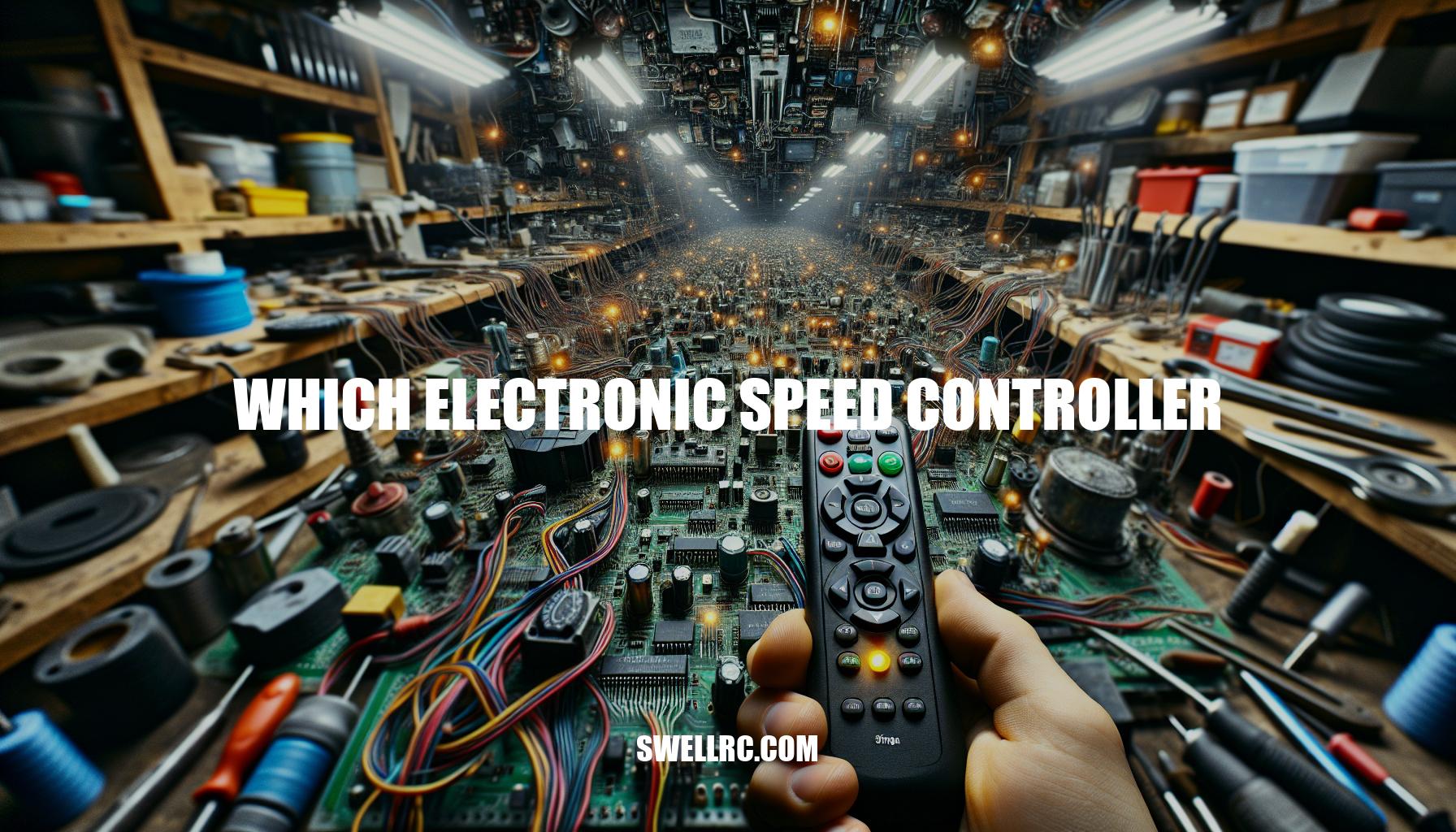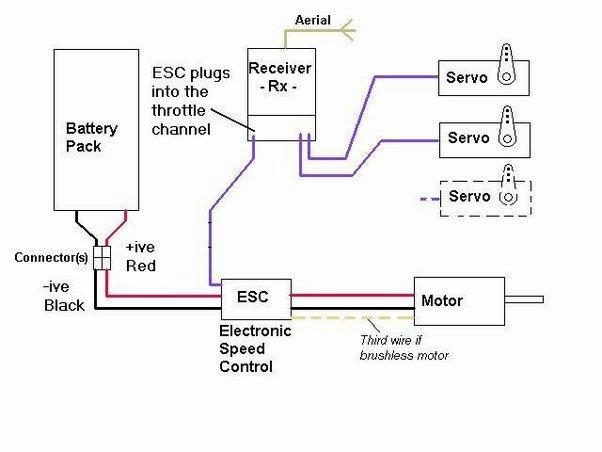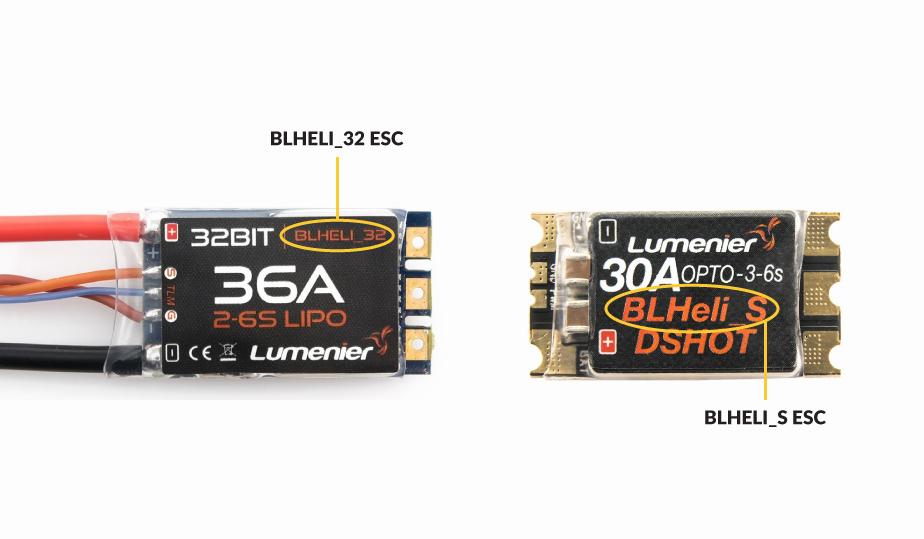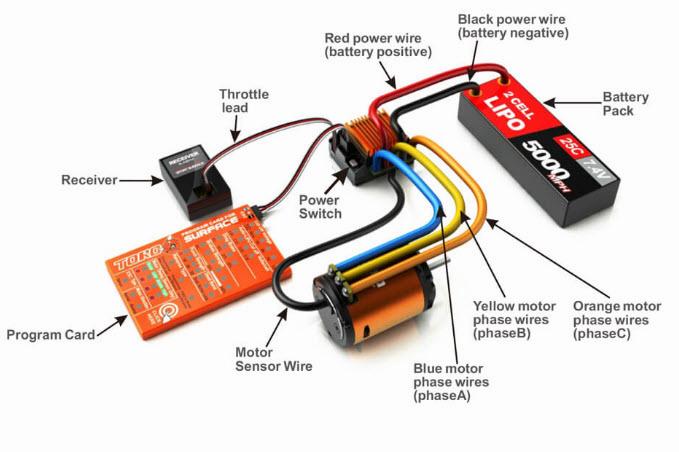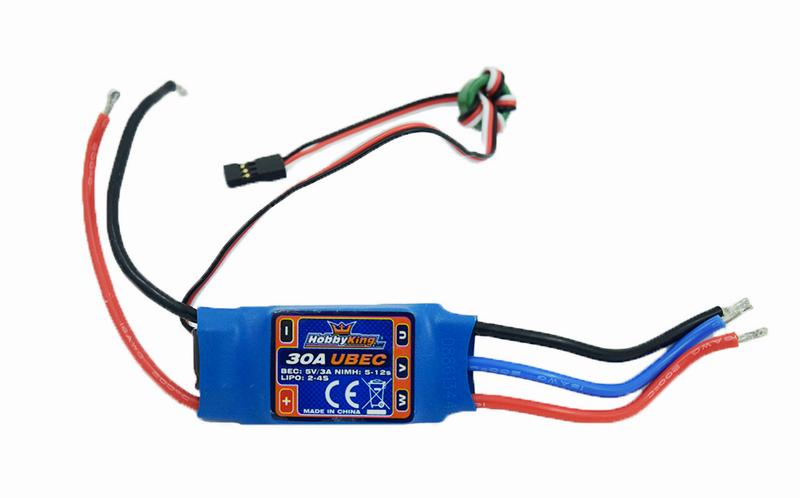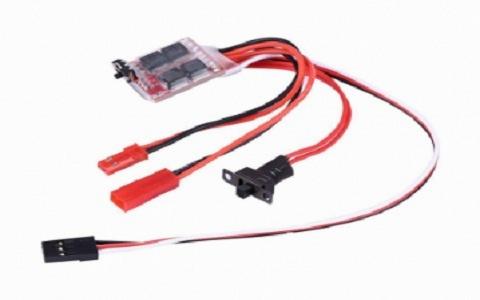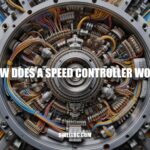Which Electronic Speed Controller: A Comprehensive Guide
Imagine you’re piloting your favorite remote-controlled drone or zipping around on an electric skateboard. Ever wondered what’s making all this possible? Meet the unsung hero of your device, an essential component called the Electronic Speed Controller (ESC). This little marvel doesn’t just run the show; it’s the master conductor, expert juggler, and brilliant coordinator all rolled into one. It’s handling the motor speed, steering the direction, and managing the overall behavior of your gadget. All these happen in a fraction of the time it takes for you to even blink. Incredible, huh? From your drone hovering in the sky to your skateboard’s smooth gliding over the concrete, every nuance of movement is a courtesy of the ESC’s virtuoso performance. Now, isn’t that fascinating? Stay tuned, we have a lot more to unfold about this tiny titan.
Understanding PWM Control for ESCs
Sure, delving into the inner workings of an ESC, let’s consider an example of a widely appreciated model, the Castle Creations Phoenix Edge. This ESC uses a specific method to control motor speed, known typically as Pulse Width Modulation, or PWM for short. I like to think of PWM as the interpreter in a lively conversation between the flight controller or radio receiver and the ESC itself.
The flight controller sends its messages in the form of PWM signals. The ESC, then, is like the smart friend who interprets these messages and, in turn, adjusts the voltage it sends to the motor, hence controlling the speed. The Castle Creations Phoenix Edge handles this task brilliantly, earning it a top spot among ESCs in the RC community.
Don’t let the jargon scare you though! In essence, it’s just a relay race where the baton (in this case, the control messages) is passed from the radio receiver to the ESC to the motor, each component understanding the previous’ instruction, and acting accordingly. Quite impressive, don’t you think?
What is PWM and how does it work in an ESC like the Castle Creations Phoenix Edge?
In the world of electronics, PWM stands for Pulse Width Modulation. Imagine it as a neat little trick that microcontrollers use to create an ‘illusion’ of varying voltage, even though they can only output a high or a low signal. So how does this work in an ESC like the Castle Creations Phoenix Edge? Well, the answer is fascinating!
This ESC (Electronic Speed Controller) uses PWM to control the speed of your RC (Radio Controlled) vehicles. It ‘talks’ to the motor by sending it a series of pulses. The duration or ‘width’ of these pulses – hence ‘Pulse Width Modulation’ – determines the speed at which the motor turns. If the pulse is longer, the motor gets more power and spins faster. Shorter pulse? The motor slows down.
It’s like flipping a light switch on and off really fast – to the naked eye, the light seems dimmer, but in reality, it’s rapidly switching between full brightness and off. The Castle Creations Phoenix Edge, by using PWM effectively, ensures that your RC vehicle has smooth, accurate and fully adjustable speed control. Without it, controlling your RC vehicle would feel less like driving a high-performance car and more like pushing a shopping cart with a wobbly wheel. You might not always see it, but PWM is the hidden hero under the hood!
Choosing the Right ESC for Your Device!
Speaking of the variety found on the market, let’s delve a bit deeper into the types of Electronic Speed Controllers available. Predominantly, you’ll find two types – Brushed and Brushless. Now, you’re probably wondering, “which electronic speed controller is right for my device?” Well, although brushed ESCs are more affordable, brushless ESCs definitely have a leg up. For instance, the Traxxas VXL-3s Waterproof Brushless Power System is a solid proof of the efficiency of brushless ESCs. Maintenance? Almost negligible. UTC? Check. Efficiency? Absolutely. The only quote-unquote ‘downside’ is their higher price tag. But here’s the kicker- with the longevity and superior performance that brushless ESCs provide, you’d be getting more bang for your buck in the long run. Fun Fact: the brushless system is often found in the latest drone tech, providing smooth and precise control. So, in the battle of Brushed vs Brushless, the Brushless ESCs undoubtedly take the cake.
What are the benefits of using a brushless electronic speed controller?
Oh, the wonders of a brushless electronic speed controller! You’d be astonished at how these nifty little devices can enhance your tech-life. Most notably, they boast of remarkable durability. Because they don’t have brushes that wear out, they’ll be your tech buddy for the long haul. Plus, one thing I absolutely love about them is how they outperform their brushed counterparts. More speed, more power, more efficiency – it’s essentially a performance power boost in a sleek little package. Additionally, and this is a biggie for me, they run incredibly quietly. There’s none of that irksome, grating noise compared to devices with brushed motors. With brushless electronic speed controllers, it’s all smooth sailing, or rather, smooth piloting! If you’re into your RC car racing or drone flying, trust me, this feature alone can make a world of difference to your experience. So, in a nutshell, these controllers pretty much promise to upscale your tech game with their top-notch durability, performance, efficiency, and noise reduction!
Choosing the Right ESC for Optimal Performance
Choosing the right ESC matters – and it’s not as simple as picking up what looks good in a catalogue. There are a couple of significant factors to consider. First, compatibility. This isn’t a case of one size fits all. Each ESC is tailored to work with certain types of motors and batteries. voltage is the second factor. Think of it as the pulses that refresh your device. An ESC with a high voltage range gives your device flex-room to perform at its peak, whether it’s running on low or high speed. Thirdly, survey your motor type. Brushless motors are usually accompanied by a sensorless or a sensored ESC. A wrong pairing could be a recipe for disaster! Finally, factor in the current. Consider the continuous current (the regular flow you can expect) versus the peak current (the highest possible rush passing through your device).
- Continuous Current: This is your ESC’s daily bread. The constant power it handles. An ESC’s continuous current rating should be higher or equivalent to the motor’s max current.
- Peak Current: Think of it as your ESC’s caffeine shot. A wakeup call it can handle for a short period. Compare this with a motor’s burst current.
Data from 2020 showed a significant inclination towards ESCs compatible with Li-Po batteries, known for their higher power delivery and longer lifespan. So, picking ‘which electronic speed controller’ isn’t just about the glitz and glamour. It’s about understanding your device, noting its quirks, and pairing it up with the ESC that gets it. That’s how you ensure a harmonious relationship between your components and the ultimate performance.
What factors should you consider when choosing an ESC for your device?
When choosing an ESC (Electronic Speed Controller) for your device, bear in mind that it’s not a one-size-fits-all deal. You’ll need to consider voltage, making sure the ESC can handle the battery voltage you plan to use. Additionally, consider the current rating — this relates to the maximum amount of current the ESC can handle. Ensure your motor won’t draw more than this or you might end up with a literal burnout!
Let’s not forget about compatibility, ensuring the ESC works with your chosen motor type. Something that often gets neglected is the dimension and weight of the ESC. If the space in your device is tight and weight-sensitive, you’ll need a compact and lightweight ESC.
Oh! And one last nugget of advice for you, take into account extra features that an ESC might offer like inbuilt BEC, thermal overload protection, or programmability. These may or may not be necessary depending on your device and use.
Choosing an ESC can feel like a puzzle at times, but remember, it’s all about finding what suits your specific device and needs perfectly. Happy building!
Choosing the Right ESC for Optimal Performance
Installing and calibrating an Electronic Speed Controller (ESC) is often considered to be a delicate process, much like tuning a musical instrument, as it requires a precise touch and deep understanding for the device to perform at its best. Wrong installation can result in uneven control, power inefficiencies, or even breakdowns of your electronic device.
First off, always pay close attention to the manufacturer’s guidelines to ensure compatibility and proper power supply. Remember, much like musicians prefer a particular type of amp for their guitar, different motors prefer different types of controllers.
Calibration comes next – this process helps your ESC understand the range of your throttle. Some models, like the Hobbywing QuicRun WP 1080, provide detailed calibration guides to help users through each step. Think of this as a conversation between your ESC and your transmitter, where the ESC ‘learns’ the language of your specific controller.
Finally, remember to keep your device cool during the process – an overheated ESC could lead to performance issues – another parallel with musical instruments, as any musician will tell you keeping their instrument at the correct temperature is vital for its sound.
Coupled with the right steps, a little patience, and an understanding of ‘which electronic speed controller’ fits best, you can fine-tune your ESC for a top-notch performance.
What are the consequences of wrong installation of an Electronic Speed Controller (ESC)?
If you goof up on installing an Electronic Speed Controller (ESC), then brace yourself, you’re about to have a front-row seat to the grand malfunction magic show. A wrong installation could spell disaster (not kidding), primarily because the ESC is your drone’s middleman – conducting a critical symphony of power flow from the battery to the motors. Mess this up and your entire drone could go belly-up, quite literally.
For starters, incorrect calibration could send your drone into some serious aerial hiccups. Picture your drone jerking unevenly or just refusing to respond to your controls. A pretty nasty scenario, isn’t it? And that’s not all. Miswiring of batteries or motors could lead to overheating. Repeat after me – overheating is bad, really bad. It could fry up your device faster than a sunny side-up.
The bottom line? A botched-up ESC installation could lead to erratic drone movements, risk of fire, irreversible damage to the device and the worst-case scenario – a potential financial hole in your pocket, especially if your warranty doesn’t cover self-inflicted screw-ups. So, do yourself a favor, channel your inner techie and nail that ESC installation down or better yet, seek help from a pro if you’re unsure. Trust me, your drone will thank you!
Choosing the Right ESC for Your RC Vehicle
Now, let’s take a closer look at some leading players in the Electronic Speed Controller market and their exceptional product offerings. For instance, HobbyWing’s QuicRun ESC series has gathered considerable appreciation for its resilience and adaptability. It can handle diverse motor types like a pro – a versatility that can be metaphorically compared to a Swiss Army Knife. It’s an example that validates the point of how important it is to consider the type of motor you’re using when deciding which electronic speed controller to buy.
- HobbyWing’s QuicRun WP Crawler Brushed: This ESC is heralded for its simplicity, reliability, and affordability. Not to mention its commendable performance in both rock crawling and trail driving scenarios.
- HobbyWing’s QuicRun WP 1080: This model is favored for its capacity to provide an organic, responsive driving experience, similar to a finely-tuned sports car. Driving your RC vehicle equipped with a WP 1080 feels nearly telepathic.
Just like choosing a musical instrument, picking an ESC involves considering not just the specs, but also how it feels and connects with you. Remember, the end game is to achieve synergy between your input and the machine’s response – a perfect harmony. That’s what makes the hobby so fascinating and satisfying!
What are some notable products in HobbyWing’s QuicRun ESC series?
Indeed, HobbyWing’s QuicRun series is a treasure trove for electronic speed controller enthusiasts. A couple of the shining stars in this series that never fail to amaze me are the QuicRun WP 1080, known for its exceptionally smooth throttle control, and QuicRun WP 1060, a beginner-friendly ESC that’s high on performance yet oh-so-easy on the wallet. Then, we’ve got the beast, the QuicRun WP 8BL150, boasting an incredible power handling capability.
But the showstopper is unquestionably the QuicRun WP Crawler Brushed. A crowd favorite, this gem has superb motor limit abilities and multiple protections, like overheat protection and battery low-voltage cut-off protection to boost reliability. Trust me, whether you’re new to ESCs or a seasoned pro, this dazzling lineup of HobbyWing’s QuicRun series has something to get your heart racing. It’s all about power, performance and top-notch hobby RC electronics, all wrapped up in one brilliant package.
In conclusion, the world of electronic speed controllers is expanding and innovating at an extraordinary rate. We’ve seen brands like HobbyWing and Castle Creations constantly push the envelope, improving the efficiency, versatility, and user-friendliness of their products. It’s quite exciting to imagine where these developments could lead. While they are still in their infancy, concepts such as AI integration and energy efficiency improvements are already making waves in the ESC market. It’s like we’re on the cusp of a new era for remote controlled devices.
Make no mistake; knowing which electronic speed controller to choose for your device is no small feat. It requires a balance between understanding the technical specifications and knowing your device’s compatibility. But once you’ve mastered these, you’ll possess the key to unlocking your device’s true potential.
The future of ESCs may indeed hold untold potential. From enhancing the user experience to increasing device longevity and versatility, these small yet mighty components continue to prove their worth. The ESC is to an electronic device what a conductor is to an orchestra – without it, there won’t be any harmony. So, here’s to every unsung ESC out there, helping our devices perform with the finesse of a perfectly conducted symphony.

